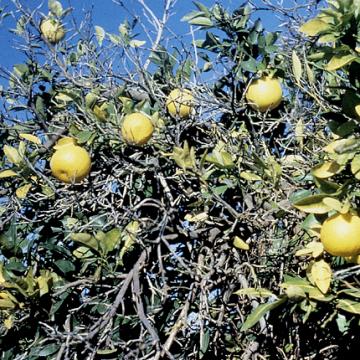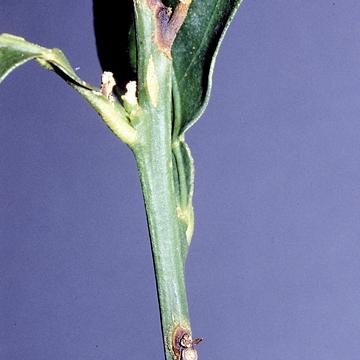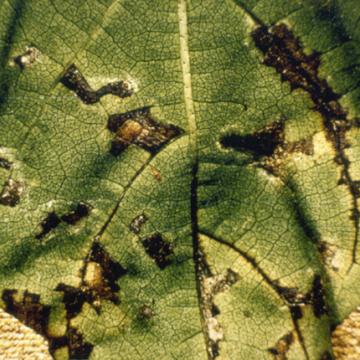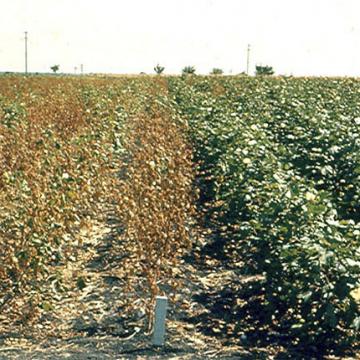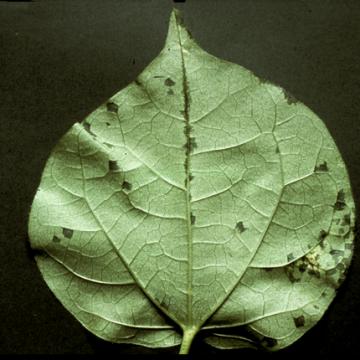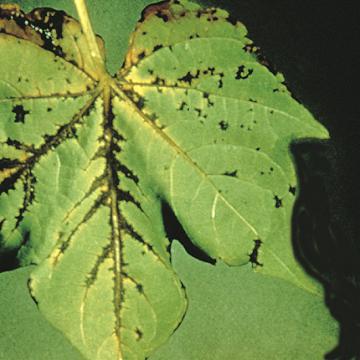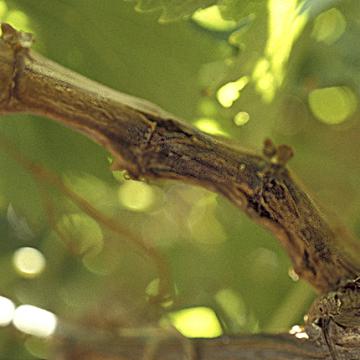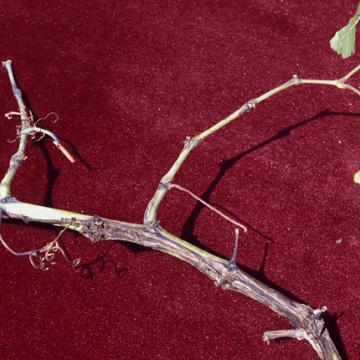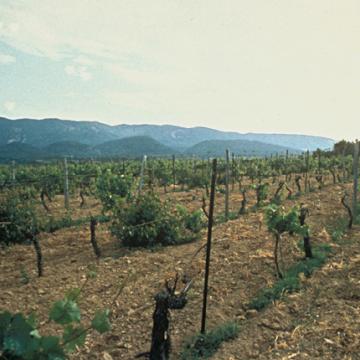DISEASE: Australian citrus dieback
HOST: Citrus (Lime)
Severe decline, a late stage of disease. The disease spreads slowly in mature trees, progressing faster in young trees.
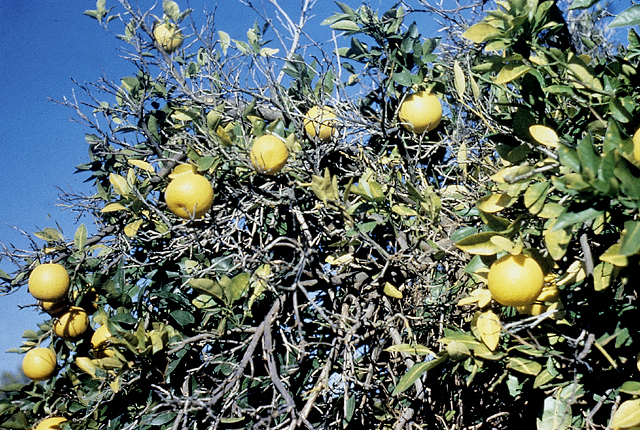
Australian citrus dieback | Citrus (Lime)
DISEASE: Australian citrus dieback
HOST: Citrus (Lime) (Citrus sp.)
PATHOGEN: 'Candidatus Phytoplasma australiense'
PATHOGEN SYNONYM: Phytoplasma Stolbur group
SOURCE: P. Broadbent
DISEASE: Bacterial blast and black pit
HOST: Citrus (Lime)
Characteristic symptoms of brownish black lesions on twigs and leaves (blast), starting with infection of petioles. Black pit refers to brown to black sunken spots on fruit, 5 to 20 mm in diameter.
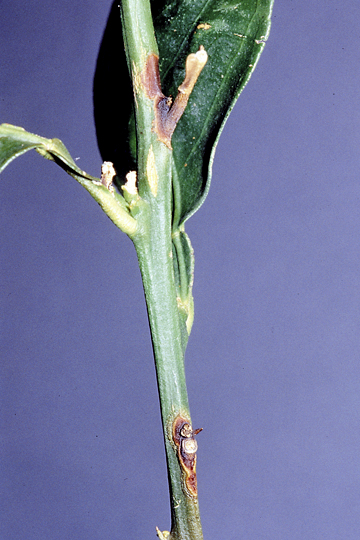
Bacterial blast and black pit | Citrus (Lime)
DISEASE: Bacterial blast and black pit
HOST: Citrus (Lime) (Citrus sp.)
PATHOGEN: Pseudomonas syringae pv. syringae
SOURCE: P. Broadbent
DISEASE: Bacterial blight (Angular leaf spot)
HOST: Cotton
Leaf with advanced stage of blight.
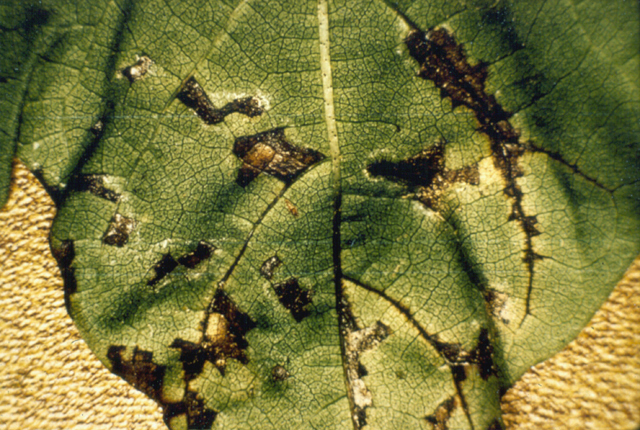
Bacterial blight (Angular leaf spot) | Cotton
DISEASE: Bacterial blight (Angular leaf spot)
HOST: Cotton (Gossypium barbadense)
PATHOGEN: Xanthomonas citri subsp. malvacearum
PATHOGEN SYNONYM: Xanthomonas campestris pv. malvacearum
SOURCE: M. Shurtleff
DISEASE: Bacterial blight (Angular leaf spot)
HOST: Cotton
Highly susceptible (left) and resistant (right) cotton cultivars. The black arm stage of the disease is the most serious and occurs when bacteria invade petioles and then stems.
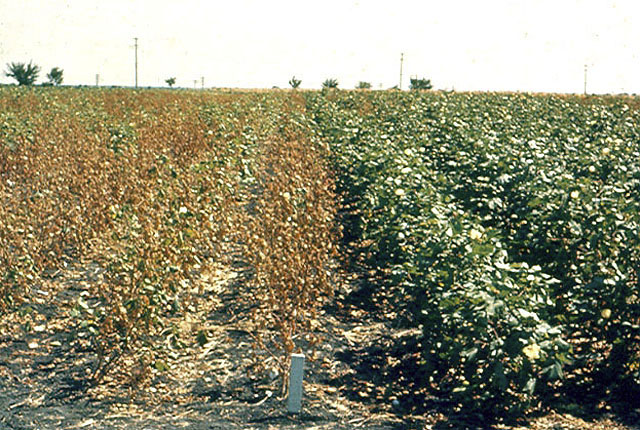
Bacterial blight (Angular leaf spot) | Cotton
DISEASE: Bacterial blight (Angular leaf spot)
HOST: Cotton (Gossypium barbadense)
PATHOGEN: Xanthomonas citri subsp. malvacearum
PATHOGEN SYNONYM: Xanthomonas campestris pv. malvacearum
SOURCE: APS
DISEASE: Bacterial blight (Angular leaf spot)
HOST: Cotton
Characteristic early symptoms are water-soaked leaf spots and water-soaking along veins.
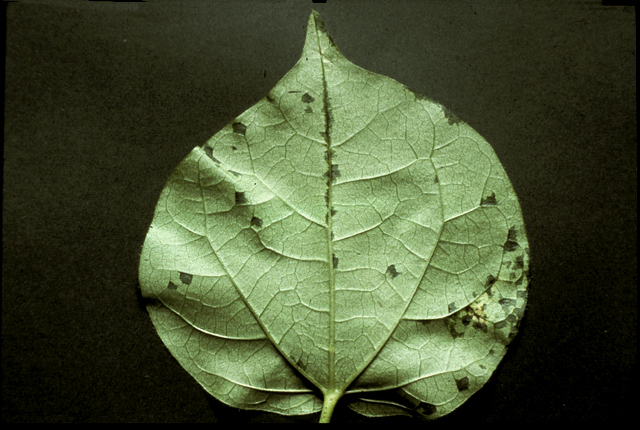
Bacterial blight (Angular leaf spot) | Cotton
DISEASE: Bacterial blight (Angular leaf spot)
HOST: Cotton (Gossypium barbadense)
PATHOGEN: Xanthomonas citri subsp. malvacearum
PATHOGEN SYNONYM: Xanthomonas campestris pv. malvacearum
SOURCE: A. Hayward
DISEASE: Bacterial blight (Angular leaf spot)
HOST: Cotton
Leaf with dark, angular leaf spots. Systemic invasion causes blackening of midribs.
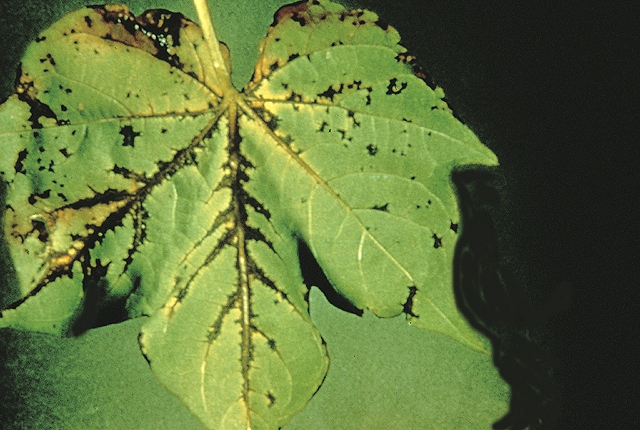
Bacterial blight (Angular leaf spot) | Cotton
DISEASE: Bacterial blight (Angular leaf spot)
HOST: Cotton (Gossypium barbadense)
PATHOGEN: Xanthomonas citri subsp. malvacearum
PATHOGEN SYNONYM: Xanthomonas campestris pv. malvacearum
SOURCE: APS
DISEASE: Bacterial blight (Bacterial necrosis)
HOST: Grape
Stem necrosis of grape.
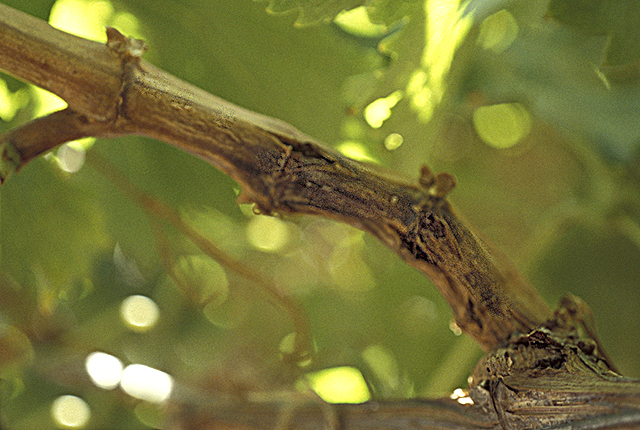
Bacterial blight (Bacterial necrosis) | Grape
DISEASE: Bacterial blight (Bacterial necrosis)
HOST: Grape (Vitis vinifera)
PATHOGEN: Xylophilus ampelinus
PATHOGEN SYNONYM: Xanthomonas ampelina
SOURCE: N. Schaad
DISEASE: Bacterial blight (Bacterial necrosis)
HOST: Grape
Stem with cankers and discolored external tissues.
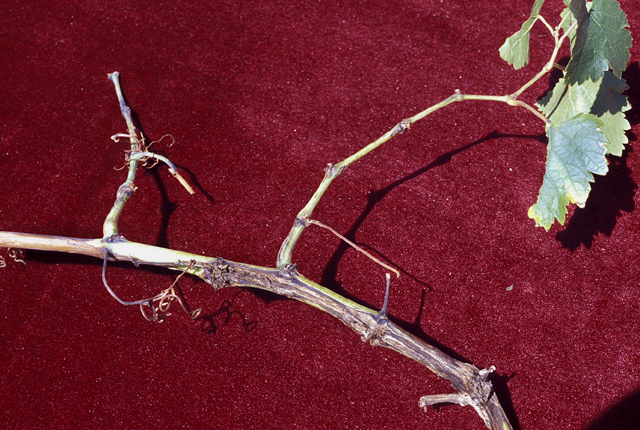
Bacterial blight (Bacterial necrosis) | Grape
DISEASE: Bacterial blight (Bacterial necrosis)
HOST: Grape (Vitis vinifera)
PATHOGEN: Xylophilus ampelinus
PATHOGEN SYNONYM: Xanthomonas ampelina
SOURCE: N. Schaad
DISEASE: Bacterial blight (Bacterial necrosis)
HOST: Grape
Severe infection in vineyard is noted by dead canes. Symptoms are most severe in spring; shoot blight, occasional spots on leaves, and cankers are common.
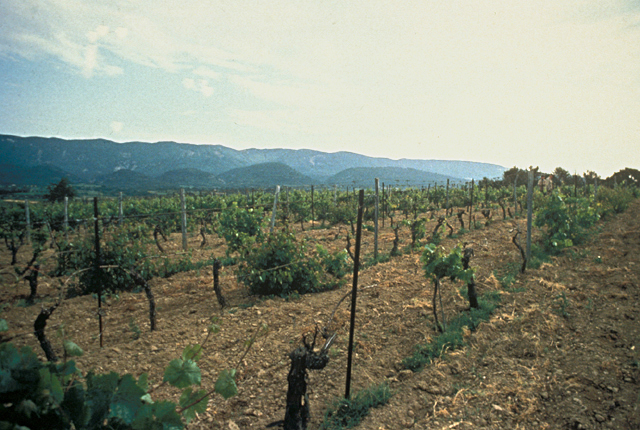
Bacterial blight (Bacterial necrosis) | Grape
DISEASE: Bacterial blight (Bacterial necrosis)
HOST: Grape (Vitis vinifera)
PATHOGEN: Xylophilus ampelinus
PATHOGEN SYNONYM: Xanthomonas ampelina
SOURCE: C. Manceau, N. Schaad


